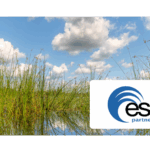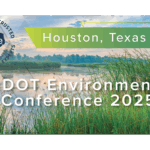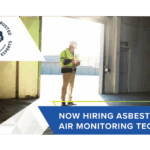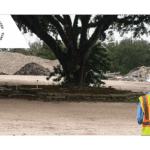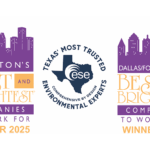
In the world of real estate and property development, understanding the environmental condition of a site is crucial for both buyers and sellers. A thorough evaluation of potential environmental risks can protect not only the natural surroundings but also the financial investments involved. This is where Wylie Phase 1 Environmental Site Assessments come into play. A Phase 1 assessment is a comprehensive investigation that examines the historical use, potential contaminants, and current condition of a property to identify any potential environmental risks. Let’s explore the importance, process, interpretation, and impact of Wylie Phase 1 Environmental Site Assessments.
Understanding the Importance of Phase 1 Environmental Site Assessments
Environmental protection is a global concern, and in the context of property transactions, it has become paramount. Phase 1 Environmental Site Assessments play a crucial role in identifying potential environmental risks and ensuring that any existing contamination is addressed before a property is purchased or developed. These assessments provide essential information about the site’s past and present, allowing stakeholders to make informed decisions regarding its potential future use. By understanding the importance of Phase 1 assessments, stakeholders can protect themselves, the environment, and future generations from potential liabilities.
The Role of Phase 1 Assessments in Environmental Protection
Phase 1 Environmental Site Assessments serve as a preventive measure against environmental disasters, ensuring that contaminated or risky sites do not go unnoticed. These assessments help in the early detection of potential sources of contamination, such as underground storage tanks, hazardous materials, or historical improper waste disposal practices. By identifying these risks early on, property owners, investors, and developers can take appropriate measures to address them, safeguarding both human health and the environment.
Key Components of a Phase 1 Environmental Site Assessment
A Phase 1 Environmental Site Assessment involves multiple components that collectively provide a comprehensive evaluation of a property’s environmental condition. These components include a thorough historical review, site inspection, and an assessment of potential environmental risks. The historical review involves researching the site’s past uses, including any potentially hazardous activities or previous environmental incidents. The site inspection includes a detailed visual examination of the property, identifying any visible signs of contamination or potential sources of environmental risks. Finally, the assessment of potential risks involves evaluating the site’s current condition and analyzing the potential for contamination based on various factors, including geographic location, neighboring properties, and previous land usage.
The Process of Conducting a Wylie Phase 1 Environmental Site Assessment
The process of conducting a Wylie Phase 1 Environmental Site Assessment involves several steps, each crucial for the accuracy and reliability of the final assessment report. Let’s explore these steps in detail:
Initial Site Inspection and Evaluation
The first step of a Phase 1 Assessment is to conduct an initial site inspection and evaluation. This involves physically visiting the property and examining it for any visible signs of contamination, potential hazards, or environmental risks. The site inspection helps in identifying potential sources of contamination that might not be immediately apparent through historical research alone.
Historical Review of the Site
The historical review is a key component of a Phase 1 Assessment, providing valuable insights into the site’s previous uses and any potential environmental incidents. This involves researching historical maps, aerial imagery, government records, and interviews with previous owners or occupants to gather information about the site’s past activities. The historical review helps in identifying potential sources of contamination or environmental risks that might have been overlooked during the initial site inspection.
Assessment of Potential Environmental Risks
The final step in conducting a Phase 1 Assessment is assessing potential environmental risks associated with the property. This involves the evaluation of various factors, including the site’s proximity to potential contaminant sources, the presence of environmentally sensitive areas, and the potential for contamination based on current and historical land use practices. By assessing these risks, Phase 1 Assessments provide stakeholders with a clear understanding of the potential liabilities associated with a property and guide decision-making regarding its future use.
Interpreting the Results of a Wylie Phase 1 Environmental Site Assessment
Once a Phase 1 Environmental Site Assessment is completed, the results need to be carefully interpreted to understand the potential risks and implications. The interpretation involves various aspects, including:
Identifying Recognized Environmental Conditions (RECs)
One of the primary objectives of a Phase 1 Assessment is to identify Recognized Environmental Conditions (RECs). RECs are defined as the presence or likely presence of any hazardous substances or petroleum products on a property, which may pose potential risks to human health or the environment. Identifying these RECs helps in understanding the severity of potential contamination and allows stakeholders to make informed decisions about the property.
Understanding the Implications of the Assessment Results
The assessment results provide stakeholders with critical information about the potential environmental risks associated with a property. It is essential to understand the implications of these results to determine the next steps in the decision-making process. Depending on the severity of identified risks, stakeholders may need to undertake additional investigations, remediation measures, or reassess their investment plans.
The Impact of Wylie Phase 1 Environmental Site Assessments on Property Transactions
Wylie Phase 1 Environmental Site Assessments have a significant impact on property transactions, both from a financial and legal perspective. Let’s explore these impacts:
How Phase 1 Assessments Influence Property Value
Phase 1 Assessments influence property value by providing crucial information about potential environmental risks. If a property is found to have significant contamination or potential liabilities, its value may decrease due to the costs associated with remediation or future environmental obligations. Conversely, a clean Phase 1 Assessment report can enhance a property’s value and attract potential buyers or investors.
Legal and Regulatory Implications of Phase 1 Assessments
Phase 1 Assessments have legal and regulatory implications, as they are often required or recommended by local laws, financial institutions, or industry-specific regulations. These assessments help ensure compliance with environmental regulations and protect stakeholders from potential legal disputes or liabilities related to environmental contamination. Additionally, a Phase 1 Assessment demonstrates due diligence, which can be crucial in legal proceedings and insurance claims related to environmental incidents or property transactions.
Future Perspectives: The Evolution of Wylie Phase 1 Environmental Site Assessments
The field of environmental site assessments is continuously evolving, driven by technological advancements and changing perspectives on sustainable development. Let’s explore some future perspectives:
Technological Advancements in Environmental Site Assessments
The advent of new technologies, such as remote sensing, geographic information systems (GIS), and advanced laboratory analytical techniques, has revolutionized environmental site assessments. These technologies allow for more accurate and efficient data collection, analysis, and interpretation, improving the overall quality and reliability of Phase 1 Assessments. Going forward, we can expect further advancements that will enhance the speed and accuracy of assessments, making them even more valuable in property transactions and environmental protection efforts.
The Role of Phase 1 Assessments in Sustainable Development
As societies worldwide embrace the principles of sustainable development, Phase 1 Environmental Site Assessments play a crucial role. By providing comprehensive information about a site’s environmental condition, these assessments enable developers and investors to make informed decisions that align with sustainable practices. They help in identifying potential risks, minimizing environmental impacts, and ensuring the responsible use of land resources for future generations.
Conclusion
Wylie Phase 1 Environmental Site Assessments are a vital tool for understanding and addressing potential environmental risks associated with property transactions and development. By meticulously evaluating historical data, conducting thorough site inspections, and assessing potential environmental risks, these assessments provide stakeholders with critical information to safeguard their investments and protect the environment. The interpretation of assessment results, the impact on property transactions, and the future perspectives further highlight the essential role of Phase 1 Assessments in ensuring sustainable and responsible development. As the field continues to evolve through technological advancements, Phase 1 Environmental Site Assessments will continue to play a crucial part in protecting the world we live in and shaping a more sustainable future.
Ready to ensure your property transactions are secure and environmentally responsible? ESE Partners is here to guide you through the complexities of Phase 1 Environmental Site Assessments with our team of expert environmental engineers and scientists. With a commitment to sustainability and a deep understanding of regulatory obligations across various industries, we provide tailored solutions that balance business progress with environmental stewardship. Whether you need due diligence, remediation, or compliance services, ESE Partners delivers quality-driven results that contribute to improving community life. Don’t let environmental risks derail your projects. Request A Proposal today and move your business forward responsibly with ESE Partners.

